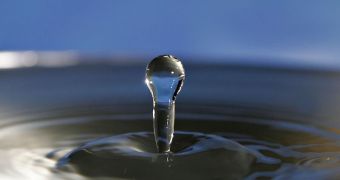Investigators at the University of Houston have recently demonstrated a new type of cobalt oxide nanoparticles that can be used as a catalyst for obtaining hydrogen out of water. The reaction only requires sunlight as a power source, so it could be used as a clean, renewable source of energy.
The new class of catalysts is able to generate hydrogen by breaking water into its constituent molecules at a much higher rate than other approached, the team reports in the December 15 issue of the top scientific journal Nature Nanotechnology.
The lead author of the new paper was Jiming Bao, who holds an appointment as an assistant professor with the UH Department of Electrical and Computer Engineering. He says that more work is needed to bring this approach to the market, but adds that early results are very encouraging.
Studies on photocatalytic water-splitting experiments have begun as early as the 1970s, the expert adds, but none of the previous attempts has been successful in obtaining a high water-splitting rate. The cobalt oxide approach may be just what this field of science has been waiting for, he comments.
According to Bao, the new study marks the first time when neutral water is used under normal light without other catalysts or chemicals to obtain such a high conversion efficiency. Scientists with the Sichuan University, the Chinese Academy of Sciences, and the Texas State University were also involved with the experiments.
For this study, the team used a variety of light sources, ranging from lasers to white light of the type found in the solar spectrum. Regardless of the type of light used, the reaction was efficient in producing an amount of hydrogen almost two times higher than oxygen.
One issue that still remains to be addressed is the relatively short life span of the cobalt oxide nanoparticles. Within an hour after the reaction starts, they become inactive, meaning they have to be replaced. Figuring out how to extend their useful life span is the next step in the study.
The chemical and electronic properties of the material will have to be refined even further, Bao adds, so that their overall cost can be decreased. Once these challenges are addressed, it will become possible to use cobalt oxide nanoparticles for water-splitting at a large scale.

 14 DAY TRIAL //
14 DAY TRIAL //